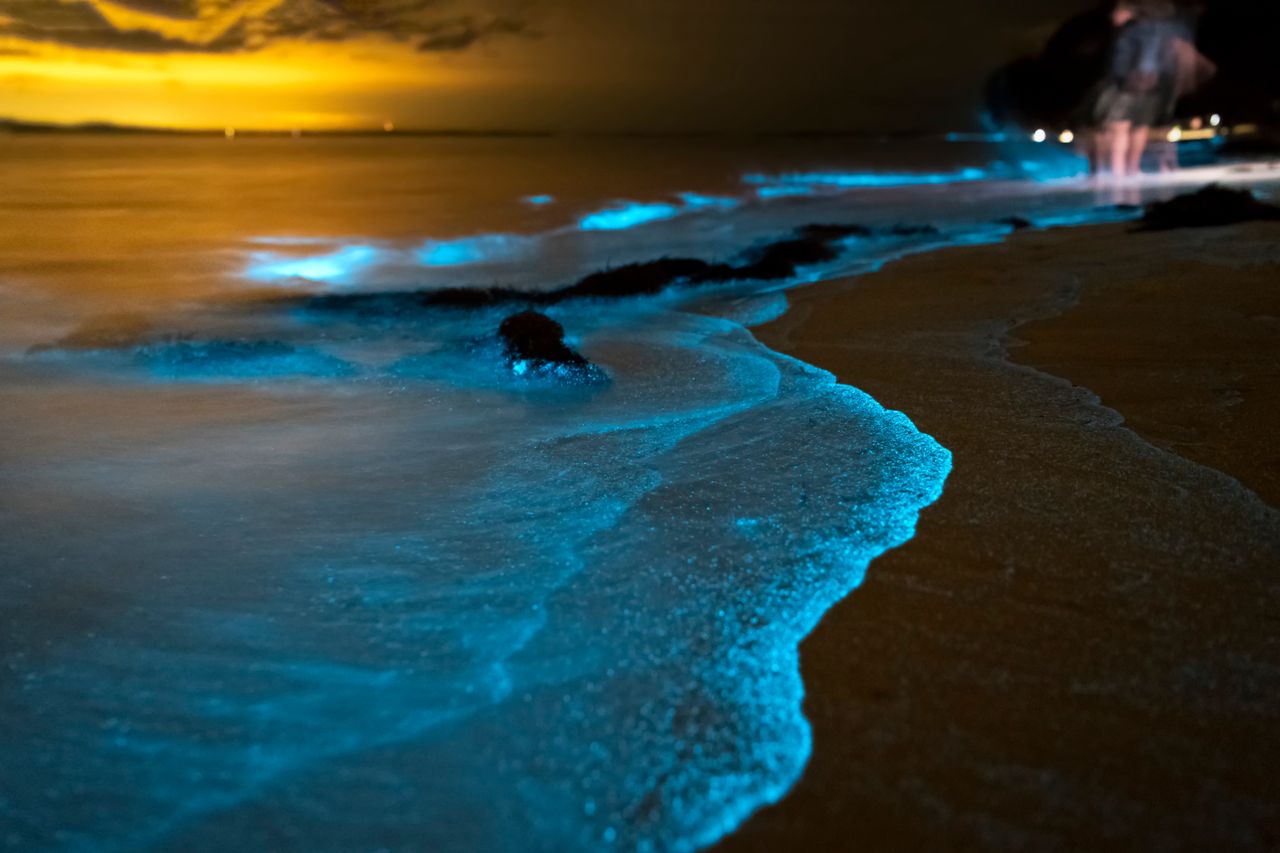
on hot summer nights, In parts of Galicia, the sea water is a brilliant blue Which dazzles and captivates all the lucky spectators. This marine bioluminescent spectacle has captured the imaginations of sailors, scientists, and nature lovers for centuries.
But what causes this amazing phenomenon? In this article, we’ll discover why and how this happens, as well as other parts of the world where you might have the chance to witness it.
What is the Ardora Sea and why does it occur?
The Ardora Sea is a natural phenomenon in which the sea water takes on a bluish color in the dark of the night. This amazing scene is due to Bioluminescent microorganisms, including the dinoflagellate Noctiluca Scintillans and other species of microalgae. These organisms emit light as a result of internal chemical reactions, which creates the characteristic luminous effect in the water.
The Sea of Ardora is a veritable sea of stars in the darkness of the night.
Scientific explanation for this bioluminescence It lies in the accumulation of these microalgae and their chemical interaction with the movement of the water. When there is a high density of microalgae and the water is agitated, this reaction takes place which generates the blue glow. This reaction is similar to what happens in terrestrial fireflies.
Luminous algae are found on the Costa da Morte due to a rare phenomenon called “Mar de Ardora”. pic.twitter.com/q4VkqtPLgp
– El Mundo (@elmundoes) August 17, 2023
This reaction can have different goals, such as attracting prey, protecting itself from predators, or communicating with other organisms. The result is a radiant teal glow that illuminates the sea at night.
Why in Galicia and in the summer?
The phenomenon of the Ardora Sea has a special relationship with the Galician coasts It occurs during the summer months due to a combination of environmental factors unique to the area.
For the great marine biodiversity…
The waters of the Atlantic Ocean off the Galician coast are home to great marine biodiversity, including various species of dinoflagellates and bioluminescent microorganisms. These small, single-celled organisms thrive in nutrient-rich waters, and ocean currents interacting with the coastal geography of Galicia contribute to the concentration of these populations.
…and warming
During the summer months, the water temperature rises. Create conditions suitable for the growth and spread of these microalgae. With an increase in temperature, the metabolic activity of dinoflagellates also increases. This leads to an increase in the production of the enzyme luciferase, which is responsible for the emission of light. So when the currents and tides move the water at night, a wonderful light effect occurs in the ocean. Revive the magical phenomenon of the Ardora Sea.
Where to see the Ardora Sea in Galicia and in the world?
To enjoy this wonderful scene in Galicia, The beaches of Carnota, Malpica and Ponteciso are ideal. These areas provide the ideal conditions for observing the Ardora Sea due to the low light pollution and concentration of microalgae.
However, this phenomenon is not limited to Galicia. and in other parts of the world, such as Mosquito Bay on the island of Vieques in Puerto Rico and Toyama Bay in Japan, One can also observe the wonderful luminous seas.
In Mosquito Bay, bioluminescence is produced by dinoflagellates Perodinium bahmansi, while in Toyama Bay, small marine organisms called bivalves are produced Create a stunning “star trail” effect in the sea.






